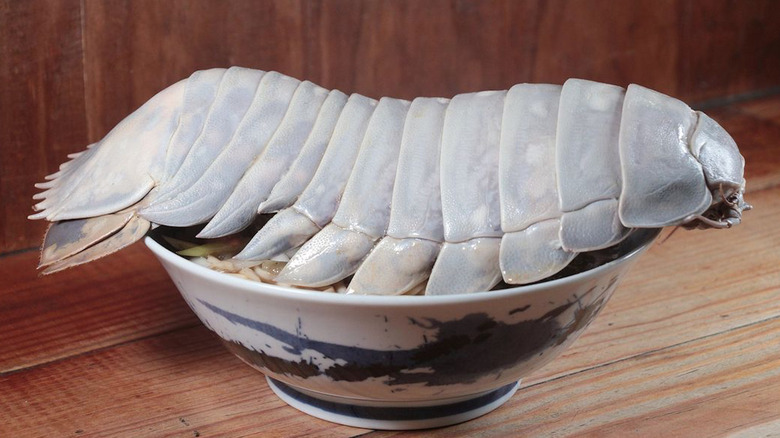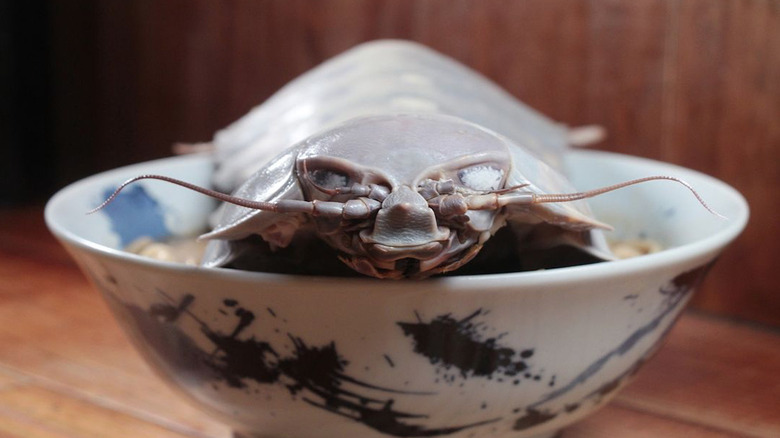Taipei's Isopod Ramen Has Foodies Lining Up Day After Day
Move over, pork belly and brisket. The hottest new ramen protein is the giant isopod (Bathynomus jamesi), a grey crustacean that looks like a guinea pig-sized lobster tail. If the critter looks borderline prehistoric, that might be because its ancestors first popped up 200 to 300 million years ago and have been trawling various parts of the ocean floor ever since. Of the 10,000 species of isopod, it's one of the largest and, recently, the most likely to be found in a bowl of ramen.
At The Ramen Boy restaurant in Taipei, Taiwan, the isopod is steamed for 10 minutes, much like you would a lobster or crab legs, before being placed over a bowl of piping hot ramen. Since debuting this specialty menu item on May 22nd, over 100 people have signed up for a chance to eat this radical ramen.
In a statement to Reuters, the owner, Mr. Hu, chalks up the dish's popularity to "It is so attractive because of its appearance — it looks very cute." Cuteness, like beauty, must be in the eye of the beholder. Still, the dish is making big waves in the foodie world, with locals happy to pony up 1,480 Taiwan dollars ($48 in U.S. currency) for the pleasure of tasting it.
And what does it taste like? As it belongs to the crustacean family, it's unsurprising that many people describe the taste of isopods as mirroring that of shrimp and crab.
A prehistoric crustacean becomes a top ramen ingredient
This dish isn't without its fair share of controversy. Biology professor Huang Ming-Chih told Taiwan News that he was worried that the isopod isn't safe for human consumption. He noted that isopods are like the carrion birds of the sea, feeding on dead marine animals. Indeed, a recent study conducted off the Gulf of Mexico showed isopods swarming around dead carcasses of alligators. Huang's concern is that remnants of these dead marine animals may remain, including poison from puffer fish and other shellfish. Plus, these isopods haven't been thoroughly tested; Huang says because they live at the bottom of the sea, they could have absorbed heavy metals like mercury. Still, so far there haven't been reports of people becoming ill from eating the creatures, and isopods have been consumed in certain Asian territories since the 1970s without reports of ill health.
Beyond health concerns, others are worried about the ecological effects of deep-sea trawling fishing. Giant isopods are typically found between 1,200 to 2,400 feet down, a depth not often disturbed by fishermen. The Ramen Boy, for its part, is quick to point out that they gained access to the isopod by happy accident, not by intentional fishing.
Either way, this gargantuan roly-poly topped ramen is not expected to last too long on the menu before the shop will run out of its golden ingredient. After that, the restaurant industry will have to decide whether this crustacean is the next big name in seafood.

